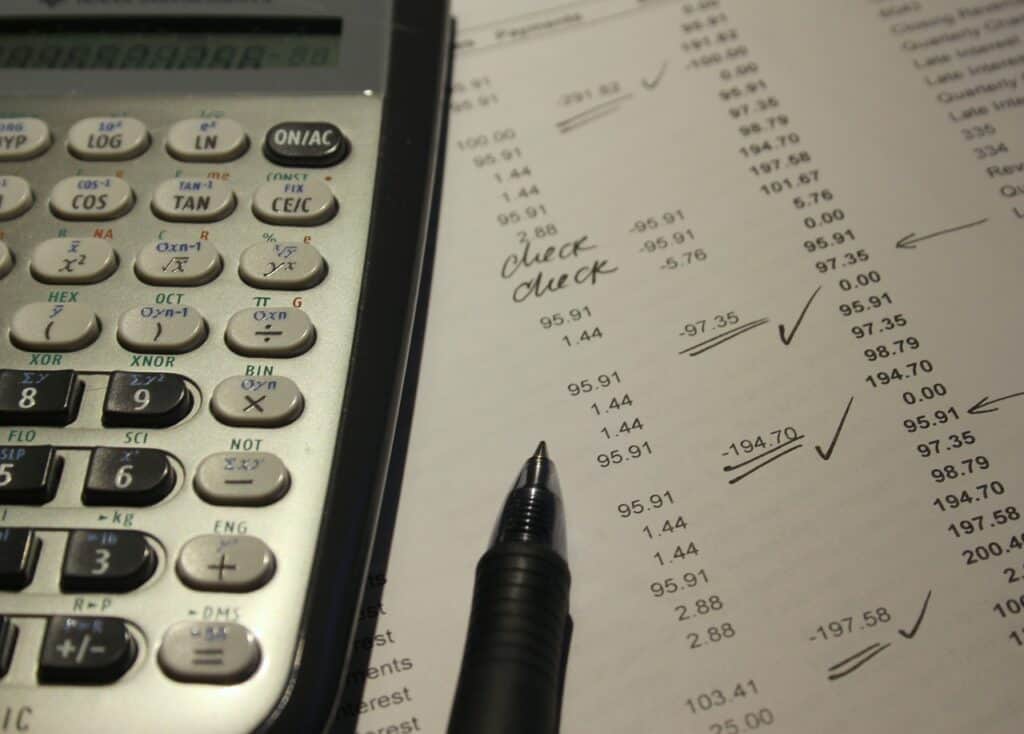In our fast-paced, increasingly-remote world, it seems like freelancers have it made. Career-life balance. The chance to raise a family on your schedule. Even the ability to give yourself a raise that matches your expertise (and inflation). These features make freelancing a fantastic option for stay-at-home moms, people with disabilities, and independent spirits. But being a business owner and managing yourself isn’t always easy. One of the biggest challenges: learning how to budget as a freelancer.
Why learn how to budget as a freelancer?
Budgeting as a freelancer is a bit different than working with a regular W-2 paycheck. Not only are you responsible for your personal finances, but you’ll have to handle your business accounts, too. That means unpredictable paydays, rotating clientele, and more complicated taxes, all on top of managing your workload and household.
That’s why we’ve gathered a few simple steps to help you build a freelancer budget that carries you closer to your goals.
Step 1: Project your earnings
To set a budget that fits your needs, you’ll need to know your expected take-home. For freelancers with experience, this part’s easy – just look at your last 1-2 years’ earnings statements or tax returns.
But when you’re still early in your career, you’ll have to make do with a rough estimation. One helpful tool is ZipRecruiter’s salary search feature, which highlights average, top-tier, and bottom-tier freelancer incomes by occupation and location.
Pro tips: Don’t forget to factor in your experience! Most beginners don’t earn expert rates. Additionally, it’s better to underestimate than overestimate your potential income; otherwise, you may come up short when it’s time to pay your bills.

Step 2: Estimate your average monthly income
Once you’ve determined your expected income, you can figure your average monthly income. While you may tweak it after gaining some experience, even a rough guesstimate gives you a number to plan your finances around.
- For hourly rates: Decide how much you’ll charge per hour, then multiply that by the number of hours you plan to work per month.
- For annual estimates: Divide your annual income by 12 months.
Calculating and tracking your monthly average income is especially important for freelancers. Unlike most W-2 jobs, you’re not guaranteed a minimum hourly wage; your paycheck will vary based on your rates and output.
Account for your taxes!
But bear in mind that this is an average: as a freelancer, it’s common for your income to fluctuate. As such, you may prefer to lowball your estimate to provide a larger buffer.
Freelancers’ taxes are a bit unusual, particularly if you don’t operate under an LLC.
Notably, your tax bill is likely to increase thanks to the 15.3% FICA tax – also known as the employee or payroll tax.
The FICA tax isn’t new. When you work a W-2 job, you and your employer each contribute 6.2% of your salary toward Social Security and 1.45 % to Medicare.
But when you’re self-employed, you’re responsible for the whole tax: 12.4% to Social Security and 2.9% to Medicare. (Though you can write off the business half as a tax deduction, and the Social Security portion phases out over a certain income threshold.)
Another change is how you pay your taxes. Freelancers who earn over $400 annually must file a tax return, while those earning over $1,000 must pay quarterly estimated taxes. Failure to pay on time could result in owing fees or even interest on unpaid taxes to the IRS.

The solution: Save ahead of time
A general rule of thumb for freelancers is to save around 30% of every paycheck for taxes. Some freelancers save as much as 50%, just in case. Though you likely won’t owe the full amount between business and personal deductions, it’s better to over-prepare than be indebted to the IRS.
When it comes to your freelancer budget, you’ll want to consider your tax burden. Fortunately, the math is easy: just multiply your expected monthly income by 0.70 (70%) to figure your after-tax “take-home” pay. That’s the amount of money you have available to cover your freelancing and personal expenses.
In reverse, if you need to calculate how much money to save for taxes, multiply your expected monthly income by 0.30 (30%).
Step 3: Calculate your expenses
The next step of learning how to budget as a freelancer is figuring your expected expenses. You can break this process into three segments:
- Determine (or estimate) your business overhead
- Calculate your personal expenses
The purpose of this step is twofold.
First, to set a number for your budget calculations. (Duh.)
Secondly, calculating your expenses gives you a chance to double-check that your expected income can cover both your personal and professional expenses. If your expenses outpace your earnings, you’ll need another source of income – like from a part-time job or spouse’s earnings – until you turn a profit.
(Note: for this article, we’re assuming you only have freelance income. However, you can easily factor in outside income in the prior step!)
1. Determine (or estimate) your business expenses
Your overhead encompasses all the expenses incurred in the normal course of business. Early on, this includes startup costs like buying equipment or paying for licensing. Later, your expenses may become more regular as you check one-time costs off your list.
Depending on your line of work, you may budget for expenses like:
- One-time or infrequent costs for new equipment and certifications
- Office supplies and furniture
- Office space and related utilities
- Relevant subscription and software services, including accounting software
- Vehicle and travel expenses
- Shipping and delivery costs
- Advertising and market costs
- Interest payments on business loans or credit cards
You may find it helpful to track your finances in an app or accounting program. In your first few months, you’ll probably have to project some of these costs for budgeting purposes. Over time, you’ll learn both what your regular expenses are and how much they cost on average.
2. Calculate your personal expenses
In simple terms, your personal expenses are any costs you can’t deduct as a business expenditure on your taxes. These include:
- Necessary expenses like rent and utilities, groceries, household items, and insurance premiums and copays
- Debt payments like student loan or car payments
- Savings “payments” like retirement, emergency, or house savings contributions
- “Fun” expenses like your vacation fund, entertainment and takeout, and hobbies
Remember that many personal expenses – including your grocery and utility bills – will vary over time. For variable items, you’ll need to determine an expected average based on past spending behaviors. (Again, the extra-cautious might budget a little extra to provide some padding in lean times.)

Step 4: Bring your freelancer budget together!
Now that you have solid numbers to work with, it’s time to add it all up!
For example, say that you expect to make $6,000 per month and pay $1,000 per month for start-up and ongoing business needs in your first year.
You also decide to be over-cautious and save 30% of your business income, or $2,000, every month for taxes.
On the personal side of things, you expect to spend around $2,500 per month maintaining your household.
Altogether, your business and personal expenses add up to $5,500 per month. ($1,000 + $2,000 + $2,500.) Subtract that from your $6,000 in total income, and you’re left with $500 per month to stash in savings or spend on a fun weekend.
Of course, this example assumes that you’ll make more than you spend. If you run the numbers and find that your expected expenses exceed your earnings, you may have to find places to cut spending or raise your income.
Fortunately, it’s likely you’ll see your earnings increase relatively quickly in the early years as you build your business and reputation. And if you’re still not where you want to be, consider working with a Certified Public Accountant (CPA) to adjust your budget and get back on track.
Step 5: Revisit your budget as needed
The last step in learning how to budget as a freelancer is to keep on top of your finances.
The nature of freelancing means that your income, expenses, and even your tax bill will fluctuate – sometimes wildly – over time. Regularly monitoring and adjusting your budget (or not) may be the difference between going on vacation this year and owing three years of back taxes to Uncle Sam.
But you don’t have to go it alone. Services like QuickBooks, Freshbooks, and Zoho can help you track your expenses and even simplify filing come April. Better yet, these business tools make an easy deduction to lower your tax bill!

